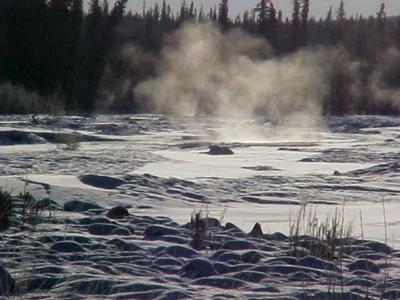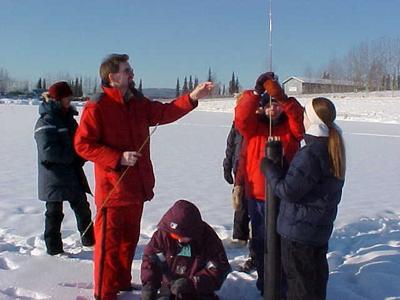
|
19 February, 2003ARCTIC WARMING . . . SHOULD WE SWEAT IT? A great deal of scientific data supports the position that, indeed, Arctic regions have been experiencing accelerated warming for several decades. According to the Environmental Protection Agency (EPA) , Alaska's temperature has increased by an average of 4 degrees Fahrenheit since the 1950's. Data indicate that temperatures in the extreme northern parts of our hemisphere are higher now than they have been in 400 years. It has also become apparent (through satellite data) that snow cover has diminished by 10 percent since the late 1960's. Other effects that are being carefully monitored include the annual duration of ice cover on lakes and ponds, which decreased by about two weeks during the 1900's. See (Friends of Phenology) Over the past few weeks several major news stories about an Arctic meltdown have appeared in such respectable sources as "The Economist", CNN online, and The Los Angeles Times. Many climate experts are now predicting that, within 50 years, the Northwest Passage will be free of ice during the summer months. This comes as a shock to any of us who have studied about explorers who, for centuries, struggled to make their way through the deadly and impenetrable pack ice that was known to tear wooden ships apart. Many perished while attempting to navigate the ice-locked straits. The first explorer to successfully travel through the Passage (and to survive) did so in 1906, but only after having been ice-bound for years. There is concern that Canada's Northwest Passage will become a Northern Panama Canal! The question is not whether it would provide a shortcut from Europe to Asia. The route would be shorter, by nearly 12,000 miles. The real point of controversy revolves around whether the pristine and uninhabited regions of the Arctic should be exposed to the risks associated with regular shipping traffic (noise, oil spills, etc.) It appears as though the Arctic may be becoming a global warming scapegoat. Certainly its sensitive ecosystems are already at risk. Less ice in the Hudson Bay has put Polar Bear populations on shaky ground. The EPA reports that, in 1999, a decline in the health of these predators over the past 20 years could be connected to higher spring temperatures and the early breakup of sea ice. Changes in vegetation coverage due to moisture and temperature changes are already being linked to infestations of insect pests and to the outbreak of fires. LEARN MORE about this issue at The Warming World: Effects on Alaska's Infrastructure, http://www.engr.uaa.alaska.edu/infrastructure/links.html Also, Review the recommendations of The Intergovernmental Panel on Climate Change by visiting http://www.grida.no/climate/ipcc/regional/042.htm.
Contact the TEA in the field at . If you cannot connect through your browser, copy the TEA's e-mail address in the "To:" line of your favorite e-mail package. |






